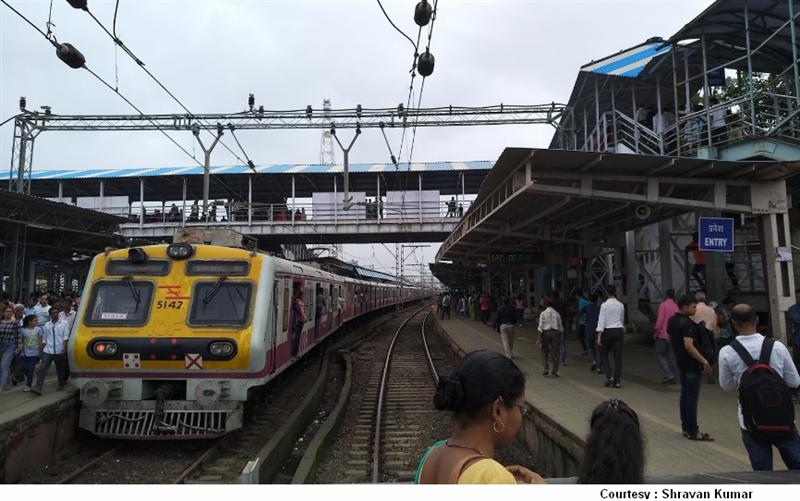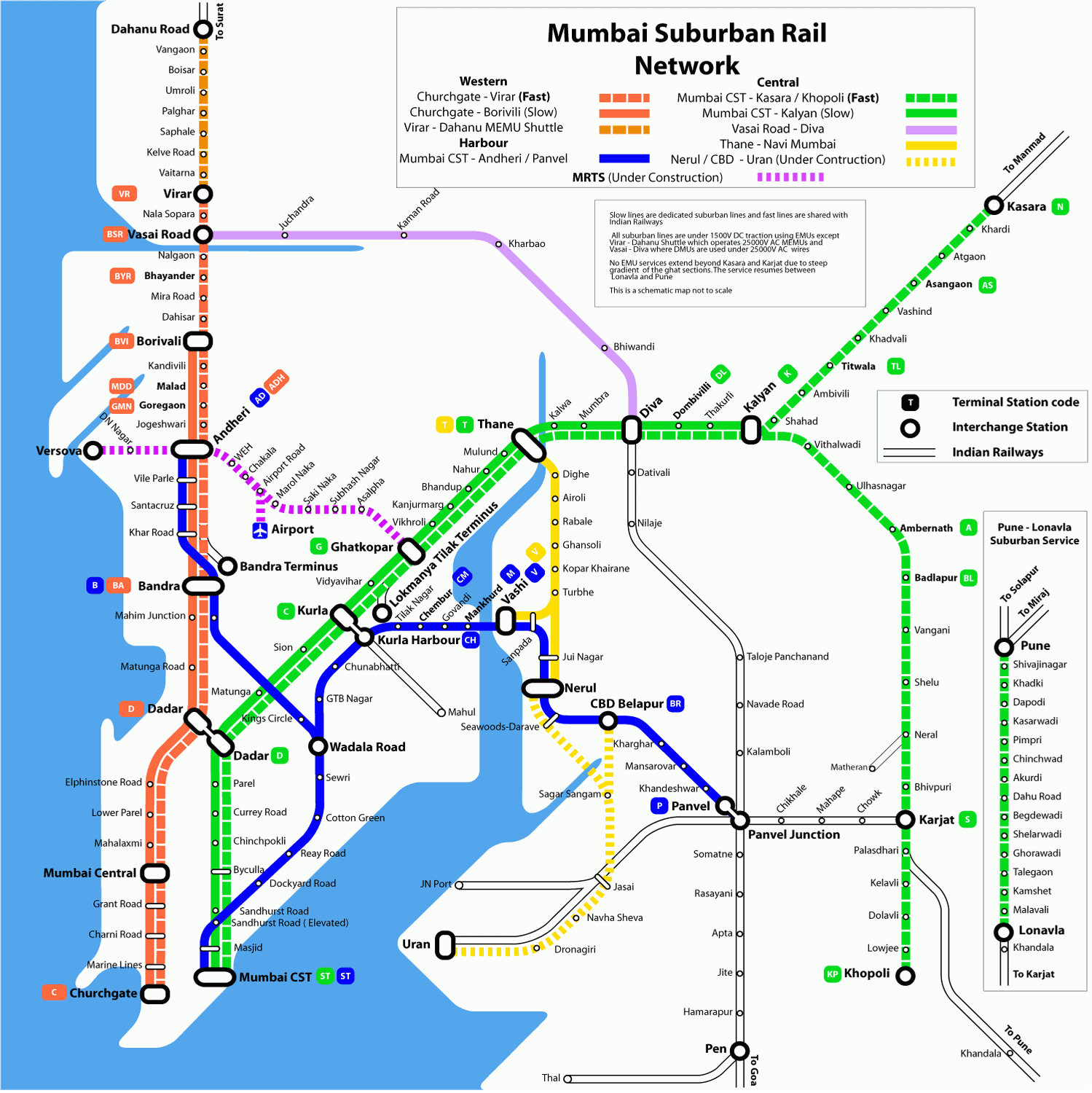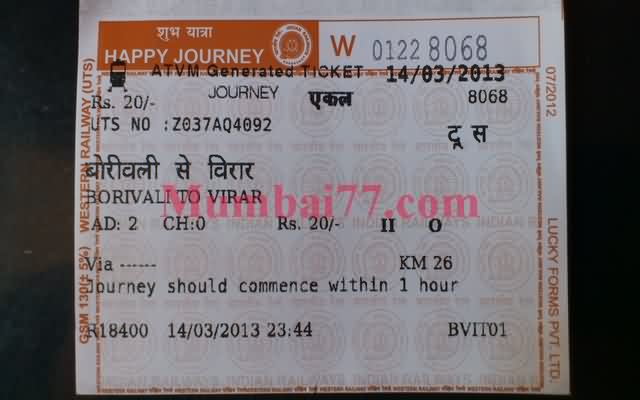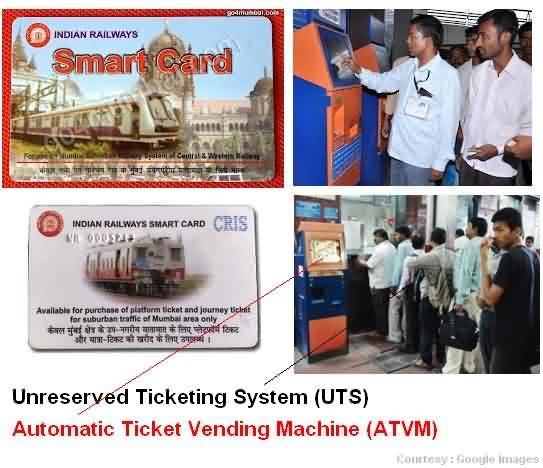“New to Mumbai and especially its Lifeline local train travel in the year 2023? Let me help you in a simple way with all things you must know about this fastest public transport in the city. Many aspects of one of the biggest train networks as Mumbai local trains is one of the largest and many things related must be known.
This page covers major and small things one needs to know if traveling via these suburban local trains, The Lifeline of Mumbai. Things like a ticketing system, timetable, fares, regular & air-conditioned trains, security-system, helplines, and more.”

About Mumbai Local Trains Travel Year 2023
The first few things a person new to this commuting options usually wants to know about are :
- How a Mumbai local train Looks ?: Below picture displays the latest looks of the local train standing on a railway platform. More pictures of old looks of the same and the current interior and things like railway premise, platform, indicators, etc can be seen at this picture gallery.
- Best time to travel via local trains (To Avoid Crowd): It is one of the very important questions as train photos scare many first-timers, So I am glad you thought about the same. The answer to this question is NON-OFFICE hours, Since there are no fixed office timings around Mumbai city, So comparatively low crowded timings to travel is between 11:30 Am till 4:00 Pm. It also depends on the source and destination of travel.
Also keep a note (in fact, the correct word is ‘care’) while boarding a destination train like Virar (Fast). If you plan to get down at Borivali (A suburban station between the city and destination Virar) never ever hold on to a Virar fast, People may literally be angry at you. The reason, Virar & Vasai locations in the far north have a huge crowd, and if someone boards this train when already have many direct options to Borivali then it is obvious.
What the term ‘Low Crowd or Less Crowded’ means to a ‘Mumbaikar’ (Citizen) may not match with a tourist / foreign national, As sometimes getting a chance to board and stand comfortably inside local trains also means ‘Low Crowd’ for we Mumbaikars. For a tourist who experienced international travel options via Metros, the terms comfort travel and the low crowd can be contradictory.
- Are people helpful ?: And the answer to the question is 100% or almost YES. Ask a question to a guy commuting and 3 standing around will help with suggestions, That’s how it is many times if not always. That is how Mumbai commuters are, Pushy and annoying at times in-crowd but helpful always.
- Mumbai Railway Network, Map, Station names, etc: In the simplest possible way, A huge network of Mumbai railways is divided into 3 major routes which are Western (Mainline), Central, and Harbour Railway Routes. Major tourist attractions are on the Western route. The term ‘ Suburbs’ or ‘Suburban’ locations is common, which refers to train stations that are not part of core city boundaries, Yet very much part of the city. Just a little far from the heart of the city, all stations beyond MAHIM.
Mumbai Railway Network Map A few minutes spent on the railway map will help to understand the same. No worries if this is your first time traveling via local trains in Mumbai and that looks a bit complicated because people will always help. Feel free to lightly tap on someone’s shoulder if you experience this (A bit odd, Yet many a time people usually do it to get attention before asking something). Of Course, a gentle ‘Excuse me’ is what is followed by most citizens.
Railway station names are interesting here and every name has some history behind it. For now, here is the list of all station names in Mumbai for your reference. Well, if you are interested in knowing the km distance between 2 stations, I have that too.
- What is the difference between a slow and a fast train?: In any route (Example: Western railway route), there are a few MAJOR stations like Mumbai Central, Dadar, Bandra, Andheri, and Borivali. In between any of these 2 major stations are many other stations. For example, between suburban stations like Bandra and Andheri, there are stations called ‘Khar Road’, ‘Santacruz’, and ‘Vile Parle’.
A fast train usually Stops ONLY at major stations. A Slow local train usually stops at all train stations taking more travel time. A point to note here is, At times when time is not a challenge, people do travel via slow trains compared to fast just to avoid huge crowds.
- How safe are Mumbai local trains ?: These trains are very safe, and even late-night travel is worry-free as working-class people are always there to give company. It is said, A job in Mumbai is not as tiring as the train travel itself. Shift jobs, Late hours, etc are common here. That is one of the main reasons if you have heard ‘Mumbai Never Sleeps’.
RPF (Railway Police Force) takes extra care during the late-night for women travelers. Proper care is taken care of at railway stations which are far away in the suburbs and are less crowded. So never get worried when around railway premises, But yes always be alert and do not be overconfident at isolated locations unknown or new. Safety care should be taken while traveling on footboard in a crowded train.
The good news is, There is zero tolerance now for traveling on the rooftop which was already an insensible view a few years back. Technology-wise ahead now, Know about the new door safety precautions taken.
- Why are Local trains called the ‘Lifeline’ of Mumbai, Still in 2023?: For any reason (technical, accidental, flooding, etc) when local trains are not operational, Mumbai slows down. It is hard to think of reaching a job on time when there are glitches in the railway network. Mumbai Road traffic is also well known here (Upcoming 13 metro lines has good plans to reduce road traffic).
Metro Line 7 and 2A have already pulled out a crowd in lakhs (About 10 Lakh at the start of 2023) and Local trains are losing up on the tag of ‘LIFELINE’.
With so many alternate travel options like Auto, Taxi, BEST buses, etc, commuting is still tough or next to impossible without local trains. Hence the term ‘Lifeline’.
- What about journey tickets ?: If you are a foreign tourist and not used to such huge crowds, I will recommend you travel inside First Class compartments and use a ‘Tourist Ticket’ which has unlimited travel option around Mumbai. 2 coaches on either side of local trains are available as a first-class coach. Alternately, the fastest growing option is the AC local trains which run with Non-AC trains (Not Separate).
More about where to get your journey tickets and more possible options, I detailed below. See also AC Local Trains.
- Where can i find more about local trains ?: Refer the train fares and time table section and go through local train article for more insight.
- Women Safety and Other Facilities ?: Special ladies-only trains are running between Churchgate and Virar and also in the Central route. Separate lady’s ticket counters are available at many stations. Police personnel and Guards are available inside the ladies’ compartment between the Evening and Morning hours which makes ladies feel safe and keep away from unwanted troubles late at night and in the early hours.
More Questions ?: Feel free to use the comment box below and ask anything.
Ticketing System
Below are the ticketing modes with details for all types of journey tickets, i.e. One way (Also called ‘Single journey’) and Return journey, First or Second class coach travel, AC or Non AC local trains, Platform tickets, etc.
- Booking Office (Ticket Counters): This is one of the oldest modes to get your journey tickets. Every railway station in Mumbai has one or more ticket counters which help with journey tickets, seasonal passes, platform tickets, smart card recharges, and inter-city journey tickets too. Transactions are done in CASH (Indian Rupees), a Separate queue for those looking to buy First Class tickets / seasonal passes and card recharges.
Those who do not travel regularly on these suburban local trains or are not tech-savvy usually stand in long queues. On heavily crowded railway stations, railway staff members also help to get tickets via ATVM smart card machines (Details below).
Local Train Ticket - ATVM smart cards: There are Smart card-operated ticket vending machines available at all railway stations in Mumbai. One time purchase of a smart card (the same card can be used by any other individual) cost about Rs.70 to Rs.100 and is used to buy local train journey tickets for Regular, AC, First Class, Second class journeys and also to buy platform tickets for both Adults and kids.
Group tickets can be purchased and recharge can be done at station counters. The recharge amount can be anything between Rs.20 to a maximum of Rs.9500 which will be valid for the next 1 year (12 months from purchase). Discounts up to 3% to 5% are given on recharges. An Amount of Rs.50 is taken as deposits which are refundable when card cancellation is requested (Cancellation charges of Rs.30 Applied).
Like ATVM (Which is Smart Card only Operated), Another Cash/Coin-operated only machines are also available which helps tech-savvy commuters to skip the long queues and use the same cash to get all the required journey tickets. This machine is called ‘ATVM‘.
ATVM Smart Card Machines - Mobile Ticketing (UTS App): The recent and most hassle-free way of getting a journey ticket directly on your mobile which also promotes paperless travel is done via UTS app. It is also called ‘Mobile Ticketing’. Simply follow the steps and book your local train journey in minutes.
A very important note related to UTS mobile ticketing is that One cannot book the tickets when around/inside the Railway premises. It has to be booked within a 2 km radius area of stations or at a proximity of about 100 meters (Approximate) distance from railway stations. This limitation has been applied considering ticketing frauds (Travelling without a ticket) where a person tries to travel without a valid ticket and upon finding a ticket-checking officer, tries to book immediately to avoid getting caught.
UTS tickets online recharge via bank/ credit cards etc are available and are done smoothly in a few steps via the same mobile. Complete details and step by step guide are available on mobile ticketing article page.
- Tourist Tickets for Local Trains: Especially for the convenience of all tourists in Mumbai who want to travel unlimited in a day or few and do not want to go for Mobile apps and Smart cards, Special ‘Tourist tickets’ are available at railway counters. Options like 1 Day, 2 Days, and 5 Days valid journey tickets for both First Class and Second Class are possible with this ticketing option. A tourist can travel for unlimited time between any stations throughout Mumbai’s local train railway network using the same. Charges for the same are detailed below.
1 Day unlimited travel ticket fares
Rs.270 (Adults First Class) & Rs.75 (Adults Second Class). Kids/Child (Rs.170 & Rs.55).2 Days unlimited travel ticket fares
Rs.445 (Adults First Class) & Rs.115 (Adults Second Class). Kids/Child (Rs.250 & Rs.75).5 Days unlimited travel ticket fares
Rs.510 (Adults First Class) & Rs.135 (Adults Second Class). Kids/Child (Rs.285 & Rs.85).
Train Routes, Timings and Fares
In the above section, I already detailed 3 major routes, Suburban, Major Railway stations, and the best time to travel in local trains. Below is something more one must also know related to local train routes and timings.
Western Railway Route is also called the ‘Main Line’ which connects the Suburban and extreme north stations of Mumbai city (Which are called Vasai Virar locations) and Beyond that is Dahanu and Palghar train stations (Maharashtra state) and is the endpoint for local trains. More ahead and beyond starts Gujarat state.
Inside the heart and core of the city, the very first and one of the oldest railway stations is ‘< an HREF="https://www.mumbai77.com/city/4367/location/churchgate/" target="_blank" rel=" no opener">Churchgate‘. The island city almost started around this location. Western Railway local train network lengths a total of 123 Km (76.5 miles), Starting at Churchgate station and ending at Dahanu Road train station.
Suburban railway stations like Andheri, Bandra, and Mahim on the western route also have train options that connect harbor / central railway routes. One of the major stations on the central route is named ‘CSMT’ (Chhatrapati Shivaji Maharaj Terminus) not very far from Churchgate station, Just the main junction and railway station on extreme end of the central railway route with city core locations which is commonly called ‘South Mumbai’ or SOBO (South Bombay).
Peak Hour Timings: While traveling from North of Mumbai (Vasai, Virar, Borivali, etc) towards South (Churchgate) Morning timings of 8:00 Am to 11:30 Am are considered peak travel times. Similarly, if you are planning your travel towards Virar (North of Mumbai, Beyond Suburban stations) consider timings between 5:00 Pm and 10:30 Pm as peak office hours.
First Train Timings: From Churchgate, the first local train starts at 4:30 Am. Similarly from Virar, the first train is at 3:25 Am, and From Borivali at 3:50 Am. The last train from Virar to Churchgate is at 00:05 Am.
See: Train Timetable & AC & Non-AC Train Fare.
Railway Helplines
- 139 & 1512 (Updated April 2022)
- Dial 182 (National Helpline) for security.
- 138 for Medical needs, Emergency, Cleanliness and Hygiene.
- 9833331111 for GRP (Government Railway Police) Helpline.
- Central – 1275 & Western – 1311 for RPF (Railway Police Force)
- 8828119600 & 9820957367 for Sexual Harassment related complaints (Central Railway Route)
- Commissioner of police (GRP): 022-23759251
- More at complete list of helplines.
- More helplines in Central Railway Route
See Also: Western Lost and Found, Central Lost + Found, City helplines.
See More in Travel Guide




